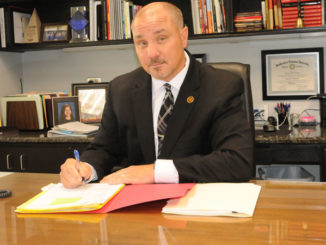
In SHELL GAME with FDA
In the 70-something years since a Louisiana man first gathered turtle eggs along the railroad track and sold the hatchlings as pets, the turtle industry in Louisiana has experienced a roller coaster ride that may be at its lowest point. The turtles-for-pets business started sometime in the 1930s when rural Louisianians gathered turtle eggs in the wild (generally along railroad rights of way through swamps) then hatched them and sold the baby turtles to pet stores.
By the 1950s farmers were building ponds at the swamp edges – keeping the adult turtles in captivity and harvesting the eggs.
The process evolved and matured into an industry that, while still following many of the old practices, now uses sophisticated methods to combat salmonella bacteria, a problem that has put a damper on the business for more than 30 years.
Based on information from the U.S. Centers for Disease Control in Atlanta, in June 1975, the U.S. Food and Drug Administration banned the U.S. sale and interstate transportation of turtles with shells less than 4 inches across. Louisiana’s turtle farmers turned to international markets and haven’t had a domestic market since then.
“This is the only pet industry in the United States that has been restricted as a result of the potential health threat associated with salmonella, even though other pet industries and food-related industries also serve as potential threats,” said Dr. Mark Mitchell, an adjunct professor in veterinary science at the LSU AgCenter.
The fight against salmonella in turtle hatchlings began in earnest in the early 1970s when the LSU AgCenter’s Dr. Ronald Siebeling, a professor of immunology, began working on a treatment for eliminating the disease from turtle eggs. In 1976, Louisiana turtle farmers began using Siebeling’s salmonella treatment.
That’s when the Louisiana Department of Agriculture and Forestry stepped in and sponsored legislation that made it mandatory for the eggs to be treated for salmonella and specified that a sample of each batch of hatchlings be tested by an FDA-approved laboratory. All Louisiana turtle farms were using the treatment by the mid-1980s.
Producing salmonella-free turtles and having them certified by the Louisiana Department of Agriculture and Forestry led to the opening of international markets, and the state’s turtle farmers developed a thriving business in Europe and Asia.
In 2005, Louisiana had 60 turtle farmers who produced more than 10 million turtles with a gross farm value of $4.7 million, according to the LSU AgCenter’s Louisiana Summary of Agriculture and Natural Resources.
In 2003, Mitchell followed Siebeling and began developing more effective treatments using non-antibiotic compounds to control salmonella in the aquatic habitat of the turtles and the water turtles are transported in, as well as in an egg wash. In three research projects, Mitchell showed salmonella was significantly reduced or eliminated in water, eggs and hatchlings.
“It is important to me that those individuals evaluating this research realize that these results are consistent with those reported by researchers working on similar projects in other agricultural industries – poultry, swine and beef – and the pet reptile industry,” Mitchell said.
“Unfortunately, the FDA has placed an unfair set of guidelines on the aquatic chelonian industry,” he added.
Mitchell said the guidelines – that salmonella be eliminated from hatchlings, that resistance to the treatment does not occur and that turtles don’t become reinfected with salmonella – “are unacceptable.”
Mitchell stays in close contact with the state’s turtle farmers, keeping them informed of what he’s doing and encouraging them not to give up. But the bureaucratic fight is a tough one.
“We’ve made definite progress,” Sonny White said of the LSU AgCenter research that’s developed processes that have all but eliminated salmonella in the small reptiles. “We can produce a 98 percent salmonella-free turtle.
“The FDA cannot turn us down. But we’re going to have to file a lawsuit to do this. They’re not listening any more.”
White, who raises 400,000 turtles a year on what he calls an “average size” farm near Jonesville, said the cost to raise a turtle ranges from 28 cents to 30 cents, and current market is paying 25 cents for each baby. Three years ago, the market price for baby turtles was $1.
Somewhere between 75 percent to 80 percent of Louisiana turtles are sold to China, where turtles are both pets and food. Mexico and Europe comprise the balance of the market.
“We’re an industry that’s discriminated against,” White said. “There’s not any food on today’s market that 98 percent salmonella free.”
Mitchell has taken the fight to Washington, having traveled to meet with FDA representatives and staff members of Louisiana’s congressional delegation to discuss his concerns with current federal regulations restricting both the interstate and intrastate sale of turtles.
“Since the FDA’s ban on selling small pet turtles began in the 1970s, pet turtle farmers in Louisiana have developed methods proven by scientific research to maintain a safe turtle, but the bureaucrats at the FDA continue to abstain from changing their flawed policy,” said Sen. David Vitter, R-La. “The FDA is holding pet turtles to a standard that is impossible to reach, one that even food products are not expected to attain.




Be the first to comment